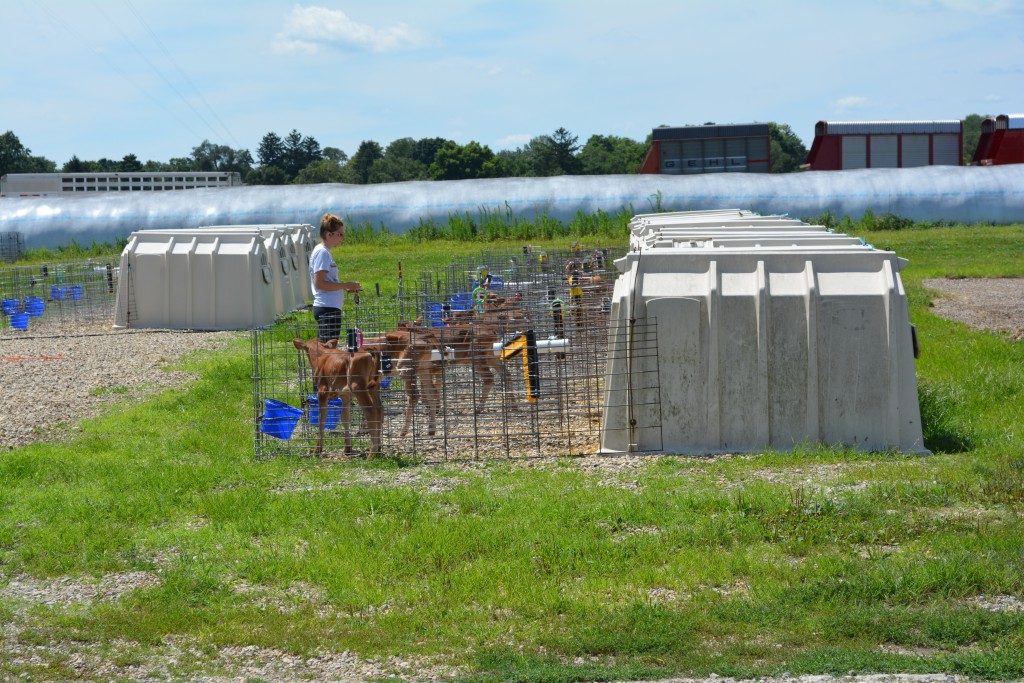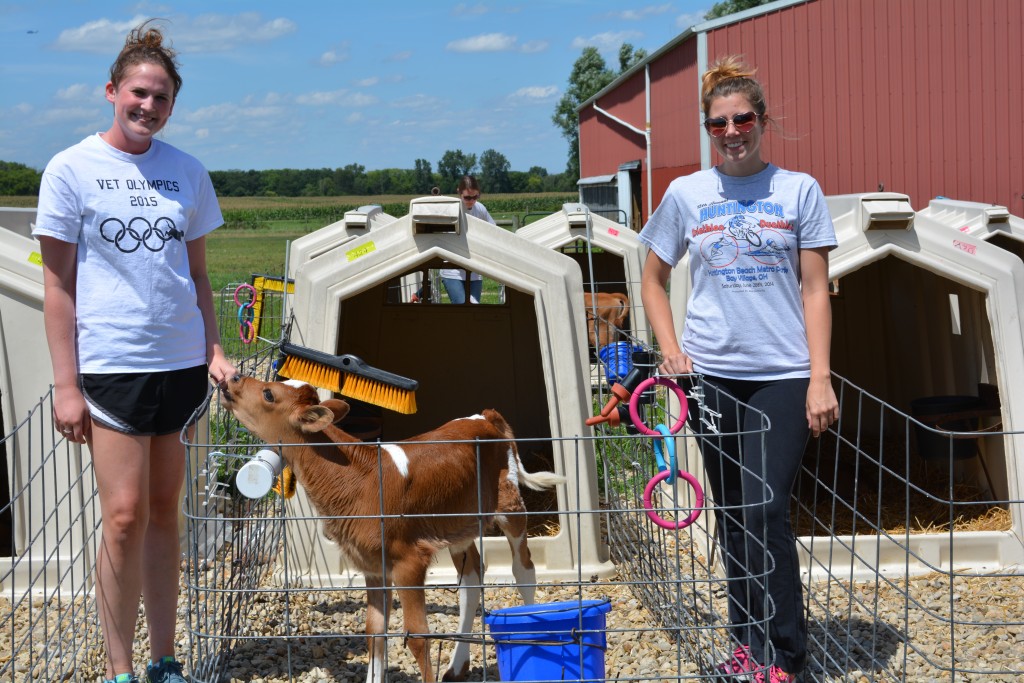To prevent the spread of infection and disease, dairy cattle farmers separate calves from each other for approximately six weeks until they are weaned from milk. Though beneficial to health, this practice may hinder calves’ social and cognitive development as well as lead to abnormal habits.
Young calves sometimes display excessive sucking and licking behaviors, often directed toward inappropriate sources such as the enclosure or another calf. As they progress through life, the behaviors can become quite exaggerated and harmful, said Dr. Katy Proudfoot, assistant professor in Veterinary Preventive Medicine and extension specialist in animal welfare and behavior at The Ohio State University. Letting calves feed naturally rather than from a bucket can help reduce this habit, but many producers are hesitant to adopt the practice.
“Veterinarians were the ones who first came up with the practice of separating dairy calves, as a vital health precaution,” Proudfoot said. “But now we’re recognizing that creating a more complex environment could help calves later in life.”

Ohio State veterinary student Emily Cosentino works with dairy calves at Waterman Dairy Center in Columbus, Ohio, as part of the school’s Summer Research Program.
Hannah Manning and Emily Cosentino, second-year veterinary students at The Ohio State University, are working under Proudfoot’s direction and studying the impact of four environmental enrichments on individually housed dairy calves. They hope to see improved social skills and overall welfare in calves who are provided the enrichments, as well as decreased sucking behaviors. They include a slightly larger pen size, a brush to rub up against, an artificial teat and rings to suck on and a tube filled with molasses to stimulate licking behavior.
The team is looking at ten calves in each group – one with environmental enrichments and one without – at Ohio State’s Waterman Dairy Center. They are continually capturing video footage of the calves during their research so they can analyze it from start to end.
“I’ve never had experience with dairy cows,” Manning said. “Working with them this summer has taught me patience and shown me that there’s still a lot more we can figure out.”

Second-year Ohio State veterinary students Hannah Manning (left) and Emily Cosentino (right) at Waterman Dairy Center in Columbus, Ohio, in August 2015.
The study is mostly preliminary, and will produce data about the relationship between calf housing and animal welfare. If the enrichments prove to be beneficial, the team thinks it would be realistic for dairy cow farmers to start providing similar elements to calves.
Comments are closed